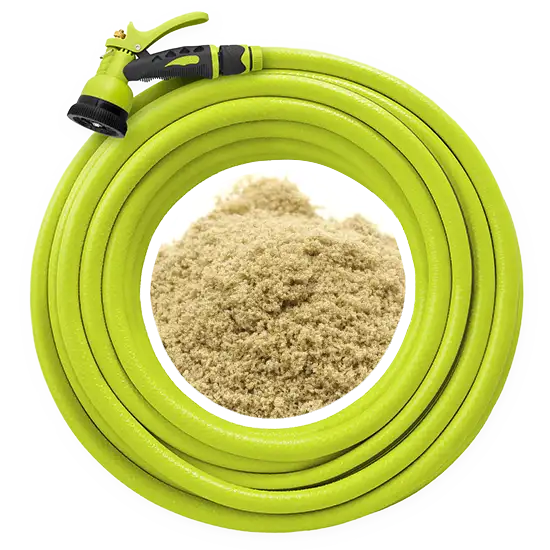Cannabis production is as much about innovation as it is about vigilance. Every element of the supply chain—from the plants to the equipment—plays a role in ensuring product safety and quality. This episode of The Scoop delves into one of the most unexpected contamination risks in hash production: garden hoses. Alec Dixon, co-founder of SC Labs, shares how a routine piece of equipment revealed hidden dangers in ice hash production and why rigorous testing and scrutiny are more critical than ever.
A 360° Approach to Cannabis Production Safety
The process of producing solventless ice hash is often seen as a “cleaner” method of extraction, relying on water and agitation rather than solvents like butane or propane. However, recent findings in Colorado uncovered that the use of a common garden hose, known as Flexzilla, introduced the fungicide thiabendazole into the final product. This fungicide, designed to prevent algae and fungal growth in hoses, unexpectedly became a contamination source when hash makers used these hoses to transfer water during production.
This surprising discovery highlights the importance of examining every aspect of hash production. As Dixon emphasizes, “Testing helps to expose the unknown unknowns.”
Testing helps to expose the unknown unknowns.
Q&A with Alec Dixon
Question:Why is testing so important in cannabis production, and what does this case teach us about supply chain scrutiny?
Alec Dixon: Testing isn’t just about meeting compliance standards; it’s about uncovering risks that even seasoned producers might not anticipate. In the case of the Flexzilla garden hose, no one could have guessed that such a common item would lead to widespread contamination. This incident underscores the need for a sentinel mindset—producers need to adopt 360° awareness, scrutinizing every element in their supply chain, from raw materials to equipment.
The contamination issue with the hoses also shows the value of proactive testing. By identifying risks like thiabendazole early, producers can avoid costly recalls and protect their consumers. This diligence is critical for building a clean supply chain and ensuring safe cannabis products.
Question:How did this discovery affect producers in Colorado, and what solutions were implemented?
AD: Once the source of contamination was identified, many producers switched to non-leaching plastics or stainless-steel tubing to eliminate the risk. This case served as a wake-up call for the industry, pushing hash makers to reevaluate their equipment choices and adopt safer practices.
The story of thiabendazole contamination isn’t just about garden hoses—it’s a lesson in how seemingly minor decisions can have significant consequences. For producers, it was a reminder of the importance of transparency and testing across the board.
Question:What advice do you have for cannabis producers looking to stay ahead of contamination risks?
AD: Producers should view every piece of equipment, ingredient, and process through a lens of potential risk. Whether it’s the jars used to store extracts, the materials in vape cartridges, or the hoses in hash production, everything needs to be tested and verified.
This approach doesn’t just protect consumers; it also positions brands as leaders in an increasingly competitive market. Building a supply chain that is above reproach and designed to meet the highest safety standards ensures long-term success.
Question:Beyond equipment, what other factors should producers consider to ensure clean cannabis production?
AD: Every step of the production process presents potential risks. Beyond equipment like hoses, producers must also scrutinize their storage containers, processing tools, and even packaging materials. For instance, some plastics used in jars or cartridges can leach chemicals when exposed to high terpene levels. These details may seem small, but they can profoundly impact product safety and quality.
Additionally, producers need to work closely with suppliers to verify the purity of all ingredients, including additives like essential oils or beeswax used in formulations. The key is to view every component of the supply chain through a lens of safety and sustainability.
Question:What broader lessons can the cannabis industry learn from the discovery of thiabendazole contamination in garden hoses?
AD: The biggest takeaway is that contamination risks often lie in areas you least expect. While the focus is usually on ingredients like cannabis flower or oils, this case shows the importance of thinking beyond the obvious. Testing isn’t just about meeting current regulatory requirements; it’s about being proactive and identifying risks before they become issues.
Another lesson is the importance of collaboration. By working closely with testing labs, producers can uncover risks they might not detect on their own. It’s a partnership that goes beyond compliance—it’s about building a foundation of trust and safety for consumers.
Question:What role does consumer education play in driving these changes?
AD: Consumers are increasingly demanding transparency and clean products. When they understand the rigorous efforts behind testing and clean production, they’re more likely to trust and support brands. Educating consumers about potential risks, like contamination from equipment or non-cannabis ingredients, empowers them to make informed choices and elevates the industry as a whole.
Conclusion:
The discovery of thiabendazole contamination from garden hoses in ice hash production serves as a powerful reminder of the complexities of hash production. From equipment to raw materials, every element must be rigorously tested to ensure safety and quality. As Alec Dixon notes, staying ahead of the curve requires a combination of vigilance, innovation, and a commitment to transparency.
About SC Labs:
SC Labs is at the forefront of cannabis and hemp testing, dedicated to advancing product safety and quality through cutting-edge analysis and transparent practices. With expertise in microbial, chemical, and potency testing, SC Labs empowers producers to build confidence in their products and their processes.


